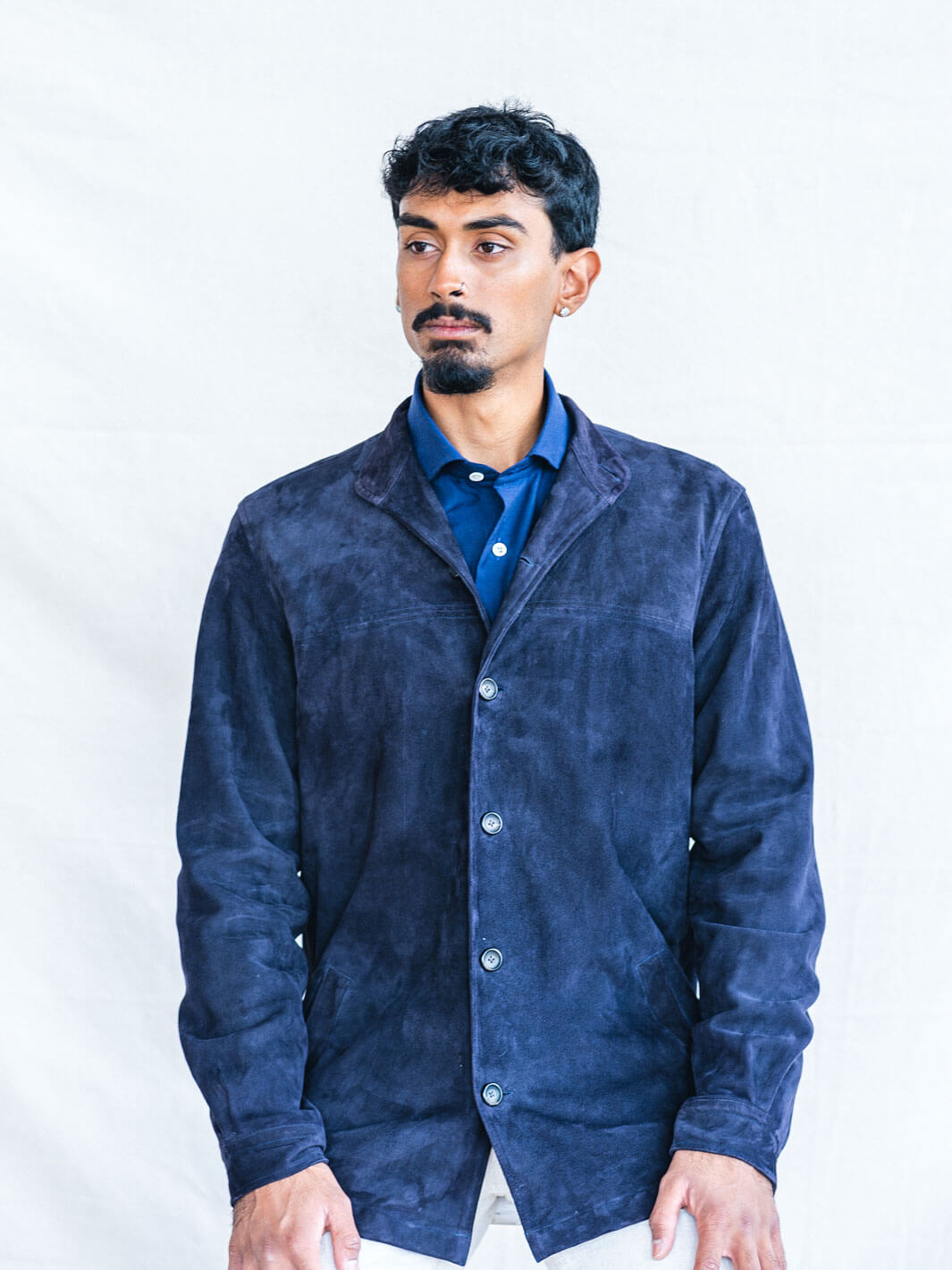In part I of our fabric series, we discussed linen's impressive ability to keep you cool even on the hottest of days. This time, we turn our attention to Cotton: a highly absorbent and breathable fiber that’s as varied as it is versatile.
What is Cotton?
It would be impossible to find a single person in the Western world who doesn’t own at least something made from cotton. The plant fiber is as much a staple in the clothing industry as corn is in the American diet. In fact, cotton is the most widely produced natural textile in the world, accounting for about a quarter share of the global market. The only fiber that beats it in terms of sheer quantity is polyester, a synthetic material that can’t hold a candle to cotton’s breathable qualities and sustainability.
Since the start of the Industrial Revolution, cotton has only become cheaper. You’ll find cotton in just about everything: bedsheets, blankets, underwear, socks, jeans, t-shirts, towels, jackets, and more. In fact, the clothing industry is the largest purchaser of cotton—around 75% of the global supply ends up in clothes. Why is this the case? Because cotton is relatively cheap to produce and is easily woven into garments. Most importantly, cotton is breathable, absorbent, and easy to clean. If there was a perfect natural material to use for clothing, cotton would come very close to that ideal.
A Brief History of Cotton
The history of cotton being used by humans goes back farther than we previously thought. Just recently, archaeologists discovered 7,000-year-old cotton fibers in Israel’s Jordan Valley that they believe originated in the Indus region (the area now known as Pakistan). This points to Israel being a potential trade hub, as cotton is not native to the land.
Since these early civilizations were largely oral, we do not have a written record of cotton cultivation. It was only later in India—circa 1,500 BCE—where we begin to see an account of cotton being worn. For example, in the classic Hindu text The Rigveda, a river goddess is described wearing a garment made of cotton. In ancient Greece, the historian Herodotus (5th century BCE) seems to confirm the existence of cotton textiles in India, referring to them as “wool of trees.”
Heading West across the Atlantic, archaeologists have also discovered evidence for cotton’s cultivation centuries before the rise of the great Mayan, Aztec, and Incan empires. As civilization developed in Central and South America, cotton was being woven into all manner of goods from blankets to clothing, so that by the time the European explorer Christopher Columbus arrived, the use of cotton was already well established.

Cotton has long been associated with slavery in the American South. Indeed, as demand for cotton grew in the colonial era, more and more slaves were imported from West Africa and the Caribbean to work the field and pick the crop by hand. The labor was incredibly demanding, with slaves working all day from morning to night in the sweltering southern heat (10 or more hours per day).
The transatlantic slave trade lasted 400 years before finally being outlawed thanks to the decades-long effort of abolitionists. Contrary to popular belief, slavery did not end because of technological innovation. In fact, the invention of the cotton gin actually bolstered the demand for slaves and expanded the industry. As a result of the sharp divide between the North and South on this issue, a civil war kicked off, ending in massive casualties—about 620,000 soldiers dead in four years of warfare. In 1865, the 13th Amendment to the Constitution was ratified, banning slavery and indentured servitude for all non-criminals.
Meanwhile, cotton production became more and more mechanized. Starting in the late 18th century, several new inventions contributed to the growth of the industry, including the spinning jenny, the water frame, and the power loom. These drastically reduced the time it took to spin and weave cotton into fabric, which led to a textile manufacturing boom in Britain and other European countries, such as Germany and France. We call this the Industrial Revolution.
How Is Cotton Made?
Cotton is a shrub that grows in warm environments with an ideal temperature of 70-100 degrees Fahrenheit. Because it prefers plenty of heat, most American cotton production takes place in Texas. China is also a leading producer of cotton, which is grown almost entirely in the Xinjiang region, which is known for its long summers. India and Brazil are also top producers.
First, the soil is prepared by tilling the land and then fertilized with nutrients. Then, cotton seeds are planted in the spring with irrigation used to provide water to the plants. During its growth period, the cotton shrub is maintained by keeping it free of pests and regularly pruning/trimming it. Once it’s ready for harvest in the fall, the leaves are removed through a process of defoliation and the cotton is collected from the open bolls. They are then sent to a cotton gin—a machine that separates the seeds from the prized cotton.
A fully mature cotton plant produces a soft, fluffy fiber made of pure cellulose. Once harvested and sent to the mill, it goes through a series of steps in preparation to be spun into yarn including carding, combing, and drawing. Finally, the yarn is woven into garments and other items.
Properties of Cotton
So, why is cotton so popular worldwide? Besides affordability, the plant fiber is known for several desirable qualities:
• Breathable
Cotton is exceptionally breathable if woven in a way that allows air to pass through it. Its strong fibers allow for great versatility—from cotton twills that are woven close together for a better drape, to plain weaves that allow for more space to breathe. There are also specialty weaves like seersucker for hot environments and muslin cloth for women's attire. The options are endless.
• Water Absorbent
There is a very good reason why people prefer to wear cotton, and that is because it is very good at absorbing sweat. Cotton is absorbent because of the molecular structure of cellulose, which allows for quick drying. Due to its hydrophilic (water-loving) properties, it won’t leave you a sweaty mess or soak into any clothes you layer over it.
• Soft & Durable
As long as you wash and dry your cotton on low heat, use a mild detergent, and forgo fabric softeners, cotton should maintain its soft feel for years. Because its fibers are naturally smooth, cotton can withstand multiple washes and wears.
How to Find Quality Cotton
Picture this: you go to a store and pick up a shirt from the display. You want to know what it’s made out of, so you look at the tag and it says: “100% cotton.” Fine, but what does that mean? And how do we determine whether it’s quality cotton or not?
Usually, cheaper items like underwear and t-shirts won’t have much in the way of detailed information. That’s because it’s usually cheap. The more expensive items, however—like dress shirts—may tell you a little bit more. Sometimes you can find this information on the store’s website. If not, contact them.
What you should be looking for are the following: fiber length and cotton variety.
• Short vs. Long Staple Cotton
Remember this: cotton quality depends on fiber length. The longer the fiber, the better the quality. Simple, right? Don’t fall for cheap gimmicks like thread count when buying bed sheets. That’s a bunch of marketing nonsense. The length of the fiber is what really matters.
The problem with short staple cotton is that they easily fray and lose their softness—if they had much to begin with. With long staple cotton, the fibers are stronger and thus, they are able to be spun into finer yarns, which adds to its softness. The difference is apparent once you put on a high quality, long-staple cotton shirt, take it off, and then put on a rough, short-staple cotton shirt. You will never want to go back.

Types of Cotton
Egyptian, Pima, Supima, Organic—what gives? It can all become very confusing. As consumers, we’re often faced with a plethora of choices for which we are ill prepared to tackle. But stay with me because this isn’t as complicated as you might think.
As we said before, cotton comes in different staple lengths (short, medium, long, and extra long). Sometimes the manufacturer makes it easy on the consumer by providing this information in the form of a name, like Pima cotton. This tells us something about its quality.
• Pima Cotton
Pima cotton, for instance, is a variety of cotton known for its extra long fibers. These are used in high-end clothing and can also be found in premium bedding. Soft, strong, and luxurious to the touch, pima cotton is some of the best the market has to offer.
• Supima Cotton
Supima cotton, on the other hand, is a trademark name for a “superior” form of pima cotton, which has to meet certain quality standards before it can be designated as such, including: fiber length of at least 1 ⅜ inches, a strength of at least 45 g/tex, and a purity of at least 90%. Supima cotton is grown exclusively in the southwestern part of the United States.
• Egyptian Cotton
For fine shirting (and now we’re getting into more expensive territory) consider Egyptian cotton. It's extra long and contains unique properties specific to its location. Egyptian cotton is grown in the Nile River Valley and is picked by hand to prevent fiber damage. Giza cotton is a superfine variety of Egyptian cotton. It is spun with an extra high twist to keep it from falling apart and is woven with great care.
• Sea Island Cotton
Sea island cotton is handpicked, only on the sea islands of the Caribbean, which makes it even rarer than Egyptian cotton. Egyptian cotton is going to be soft and lustrous, while sea island will be a bit stronger. West Indian Sea Island cotton (“black seed”) is a variety of sea island cotton that is considered the rarest cotton you can find. Produced mainly in Barbados and Jamaica, it is exceptionally fine and silky to the touch.
• Organic Cotton
As for organic cotton, this is not necessarily the most sustainable option because high-end cotton is usually produced sustainably as well. What you want to avoid is low quality cotton (the short-staple variety), which requires more resources to cultivate and produces a lot of waste. If you want to go with organic, however, it’s not a bad choice for sustainability, but it tells you nothing about fiber length. So, if you care about cotton quality AND sustainability, then go for a high quality cotton from a fabric mill or retail company you trust.
Cotton Dress Shirts & Polos
At Anatoly & Sons, we make cotton shirting from long-staple cotton. They are woven in an open weave pattern to allow for more airflow—perfect for those hot days when you need to look good.
Our polos are made with fabric from the renowned Italian mill Zegna Baruffa, which makes exceptional summer fabric from sustainably grown cotton.
Our dress shirts are also made from high quality material and woven by none other than 100 Hands, a top shirting company based out of Amsterdam.
If you made it this far, now you know a thing or two about cotton. I hope you found this educational, and we’ll see you in the next installment.
Part III: The Definitive Guide to Silk









